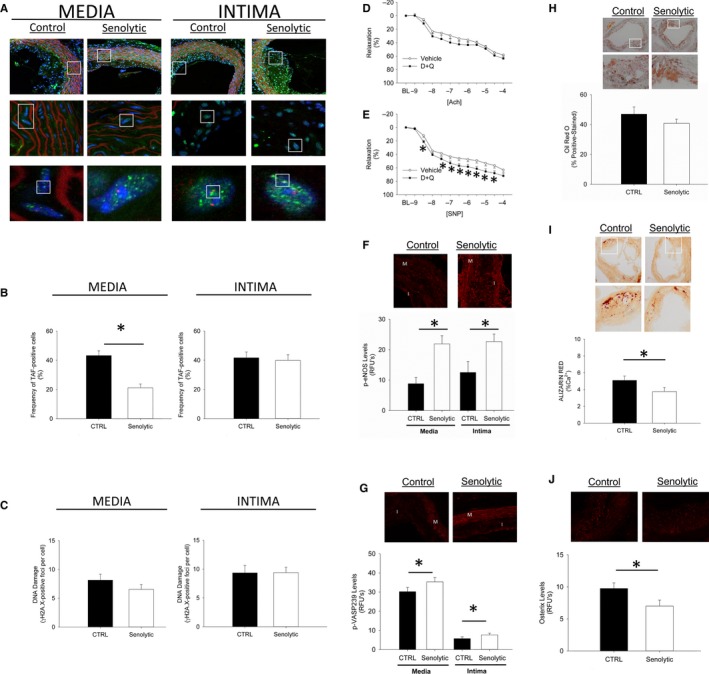Figure 2.

Effects of senolytic treatment on senescent cell burden, DNA damage, vasomotor function, and nitric oxide signaling in hypercholesterolemic mice. Chronic treatment with Dasatinib + Quercetin reduced senescent cell burden (A–B) and DNA damage (C) in the media of atherosclerotic plaques but not the intima (Panel A pseudocolor legend for high magnification lower panels: DAPI/nuclei (blue), γH2A.X (green), telomeres (red). Low magnification micrographs in upper images are provided as an anatomic frame of reference/origin). Chronic senescent cell clearance modestly improved vascular relaxation to acetylcholine (D) but markedly improved relaxation to sodium nitroprusside (E), and significantly increased levels of p‐eNOS ser1177 (F) and p‐VASP 239 (G) in both the media and intima of atherosclerotic vessels. While chronic intermittent senolytic treatment with Dasatinib + Quercetin did not alter lipid composition of plaques (H), senolytic treatment did significantly reduce vascular calcification (I), which was associated with marked reductions in osterix immunofluorescence (J). In all panels, asterisk denotes p < 0.05.
